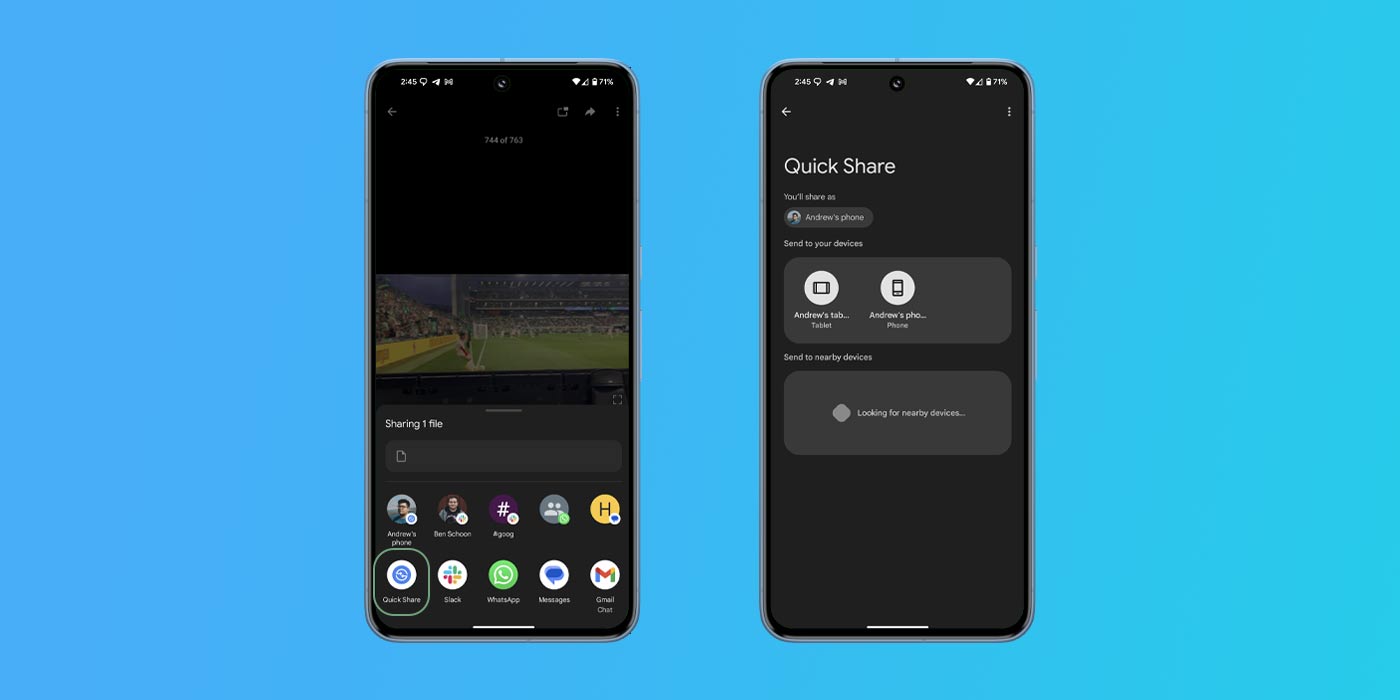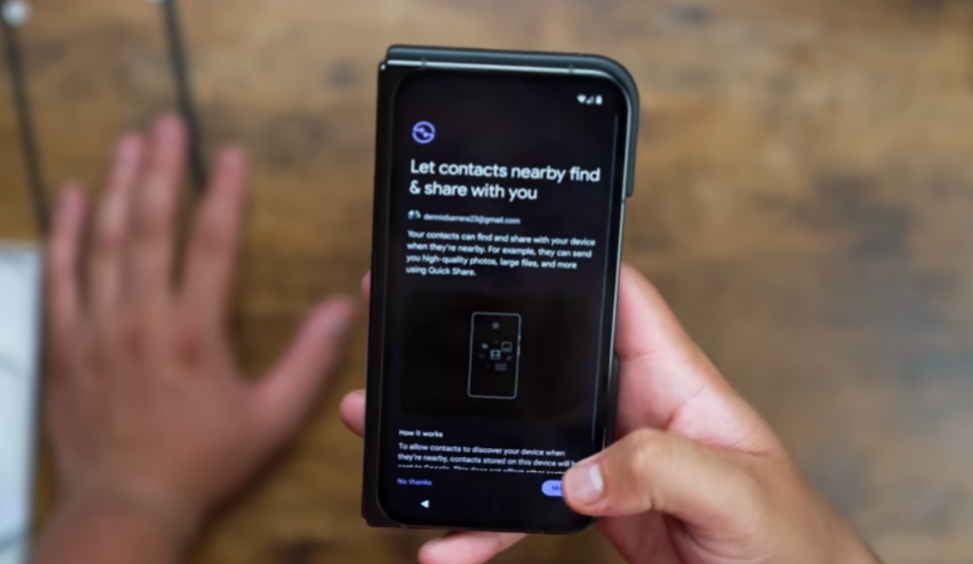
Quick Share is the long-awaited “AirDrop for Android,” but many users have no idea it exists. To help with that, Google is apparently going to start requiring new Android devices to introduce users to Quick Share during the setup process.
Google has rolled out Quick Share, formerly Nearby Share, to virtually every Android smartphone across the globe. The feature works pretty easily, allowing users to share photos, videos, files, and even simple links wirelessly to other nearby Android devices, as well as laptops and tablets using ChromeOS, and even to a Windows app. It runs quickly and is getting updates to improve the functionality and experience regularly, but that doesn’t matter if users don’t know the feature is available on their device.
Apparently, Google is set to change that.
An update to Google’s terms for OEMs (companies that make Android devices) for Google Mobile Services including the Play Store will require that all Android devices show a screen during setup that introduces the user to Quick Share, explaining what it does and how it works. The requirement, reported by Android Authority, comes alongside Android 15, meaning new devices shipping with Android 15 will start to show a screen regarding Quick Share during the setup process.
Google specifically refers to this page saying that devices are required to “integrate Google’s proximity-based device visibility user consent screen,” which would allow users to enable or disable Quick Share, as well as setting their privacy preferences. The design of this page might vary from device to device as OEMs aren’t required to directly use Google’s version of the page, but they are required to incorporate some form of a page that integrates with the Nearby Share SDK.
In theory, this could be a stepping stone towards a whole lot more people knowing what Quick Share is, in turn leading to wider use of the feature. But only time will tell.
Notably, Google Pixel devices have already started doing this, so this change would have other Android devices following the Pixel’s lead.

More on Quick Share:
- Quick Share on Android now shows a handy percentage for transfer progress
- Google hints that Quick Share could come to iOS and macOS
- Google rolling out new update for Quick Share app on Windows
Follow Ben: Twitter/X, Threads, Bluesky, and Instagram
FTC: We use income earning auto affiliate links. More.




Comments